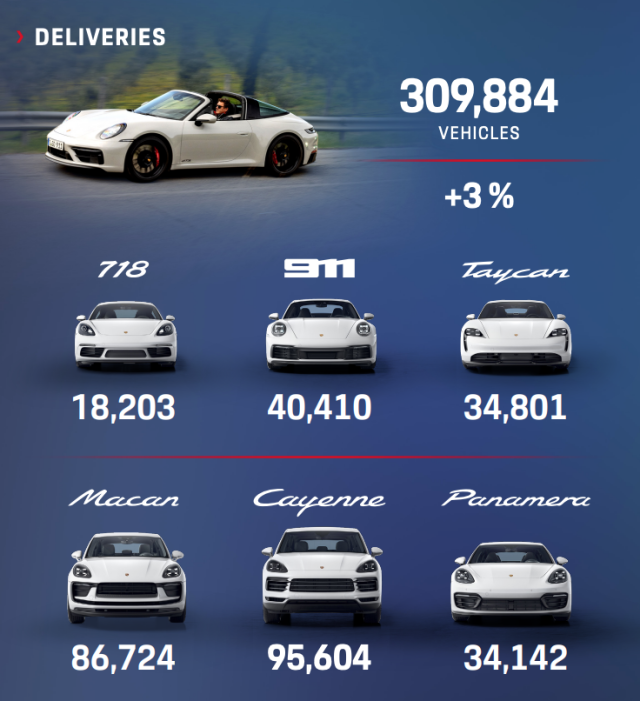Analyzing The China Market: Lessons For BMW, Porsche, And Global Automakers

Table of Contents
Understanding the Unique Dynamics of the China Market
The China market is unlike any other. Success requires a deep understanding of its unique dynamics, encompassing shifting consumer preferences, the rise of domestic competitors, and a complex regulatory environment.
Shifting Consumer Preferences
Chinese consumer preferences are evolving rapidly, moving beyond basic transportation needs. Luxury, technology, and brand image are now paramount.
- Electric Vehicles (EVs) and Hybrid Adoption: China is a global leader in EV adoption, driven by government incentives and growing environmental awareness. Automakers must prioritize electric and hybrid models to remain competitive.
- Technological Features: Connectivity, advanced driver-assistance systems (ADAS), and autonomous driving capabilities are highly valued. Chinese consumers expect cutting-edge technology in their vehicles.
- Brand Prestige and Social Status: Owning a prestigious vehicle remains a significant status symbol in China. Brand image and perceived quality are key factors in purchase decisions.
- Environmental Concerns and Sustainability: Growing environmental awareness is driving demand for eco-friendly vehicles and sustainable manufacturing practices.
The Rise of Domestic Automakers
Established and emerging Chinese automakers, such as BYD, Nio, and Xpeng, are rapidly gaining market share. They leverage several advantages:
- Advanced Technology: Many Chinese brands are at the forefront of EV and autonomous driving technology.
- Competitive Pricing: They often offer vehicles with comparable features at more competitive prices.
- Understanding of Local Consumer Preferences: Their deep understanding of the Chinese market allows them to tailor their products and marketing to local tastes.
- Strong Government Support: The Chinese government actively supports the growth of domestic automakers through subsidies, incentives, and favorable regulations.
Navigating Regulatory Hurdles and Government Policies
The Chinese regulatory environment is complex and ever-changing. Navigating it successfully requires careful planning and strategic partnerships.
- Compliance with Stringent Regulations: Meeting stringent emissions standards, safety regulations, and localization requirements is crucial.
- Strategic Partnerships with Local Businesses: Collaborating with local partners can provide valuable insights and support in navigating the regulatory landscape.
- Thorough Understanding of Government Policies and Incentives: Staying informed about government policies and incentives is essential for maximizing opportunities and minimizing risks.
Case Studies: BMW and Porsche in China
Analyzing the strategies of successful brands like BMW and Porsche provides valuable lessons for other global automakers.
BMW's Successes and Challenges
BMW enjoys a long-standing presence in China, but faces ongoing challenges:
- Localized Product Offerings: BMW has successfully adapted its models to suit Chinese preferences, offering specialized features and trims.
- Dealership Network and Customer Service: A robust dealership network and excellent customer service are essential for maintaining brand loyalty.
- Marketing and Branding Strategies: Effective marketing and branding campaigns are crucial for reaching and engaging Chinese consumers.
- Response to Competition from Domestic Brands: BMW needs to continue innovating and adapting to compete effectively with rising domestic brands.
Porsche's Strategy for Growth
Porsche has focused on the luxury segment, targeting affluent Chinese consumers:
- Exclusive Dealerships and Customer Experiences: Porsche provides a premium customer experience, emphasizing exclusivity and personalized service.
- Emphasis on Brand Heritage and Performance: Porsche's strong brand heritage and focus on performance resonate with Chinese luxury buyers.
- Digital Marketing and Engagement: Porsche effectively utilizes digital channels to reach and engage its target audience.
- Adapting to the Changing Luxury Market: Porsche continually adapts its offerings and marketing strategies to keep pace with the evolving luxury market in China.
Key Strategies for Success in the China Automotive Market
Several key strategies are essential for success in the dynamic China automotive market:
Localization is Key
Adapting products and marketing to cater to specific Chinese consumer preferences is paramount:
- Tailoring Vehicle Features and Designs: Offer features and designs that resonate with the unique tastes and needs of Chinese consumers.
- Developing Targeted Marketing Campaigns: Create marketing campaigns that are culturally relevant and resonate with the target audience.
- Investing in Local Research and Development: Invest in local research and development to gain a deeper understanding of consumer preferences and market trends.
Building Strong Local Partnerships
Collaborating with Chinese companies offers significant advantages:
- Joint Ventures: Joint ventures can provide access to local expertise, distribution networks, and manufacturing capabilities.
- Supply Chain Partnerships: Establishing strong supply chain partnerships is crucial for efficient and cost-effective operations.
- Understanding Local Market Dynamics: Partnerships provide valuable insights into the intricacies of the Chinese market.
Embracing Digitalization and Technology
Leveraging digital marketing, e-commerce, and advanced technology is crucial:
- Developing Robust Online Platforms: Create user-friendly online platforms for sales, service, and customer engagement.
- Utilizing Social Media Marketing: Effectively utilize social media platforms to reach and engage potential customers.
- Investing in Connected Car Technologies: Invest in connected car technologies to enhance the customer experience and provide valuable data insights.
Conclusion
The Chinese automotive market presents a unique set of opportunities and challenges. Success requires a deep understanding of consumer preferences, a robust localization strategy, and strong local partnerships. By learning from the experiences of BMW, Porsche, and other global automakers, companies can develop effective strategies for navigating this dynamic market and capturing a significant share. Thorough analysis of the China market and careful adaptation are crucial for long-term success in this vital region. Don't miss out—start analyzing your China market strategy today!

Featured Posts
-
 Bianca Censori And Kanye West Navigating Marriage Challenges
May 04, 2025
Bianca Censori And Kanye West Navigating Marriage Challenges
May 04, 2025 -
 Lizzo And Myke Wright Exploring Their Relationship Careers And Finances
May 04, 2025
Lizzo And Myke Wright Exploring Their Relationship Careers And Finances
May 04, 2025 -
 Review The Count Of Monte Cristo A Swashbuckling Adventure
May 04, 2025
Review The Count Of Monte Cristo A Swashbuckling Adventure
May 04, 2025 -
 Strong U S Job Growth In April 177 000 New Jobs Unemployment At 4 2
May 04, 2025
Strong U S Job Growth In April 177 000 New Jobs Unemployment At 4 2
May 04, 2025 -
 Alterya Joins Chainalysis Enhancing Blockchain Security With Ai
May 04, 2025
Alterya Joins Chainalysis Enhancing Blockchain Security With Ai
May 04, 2025
